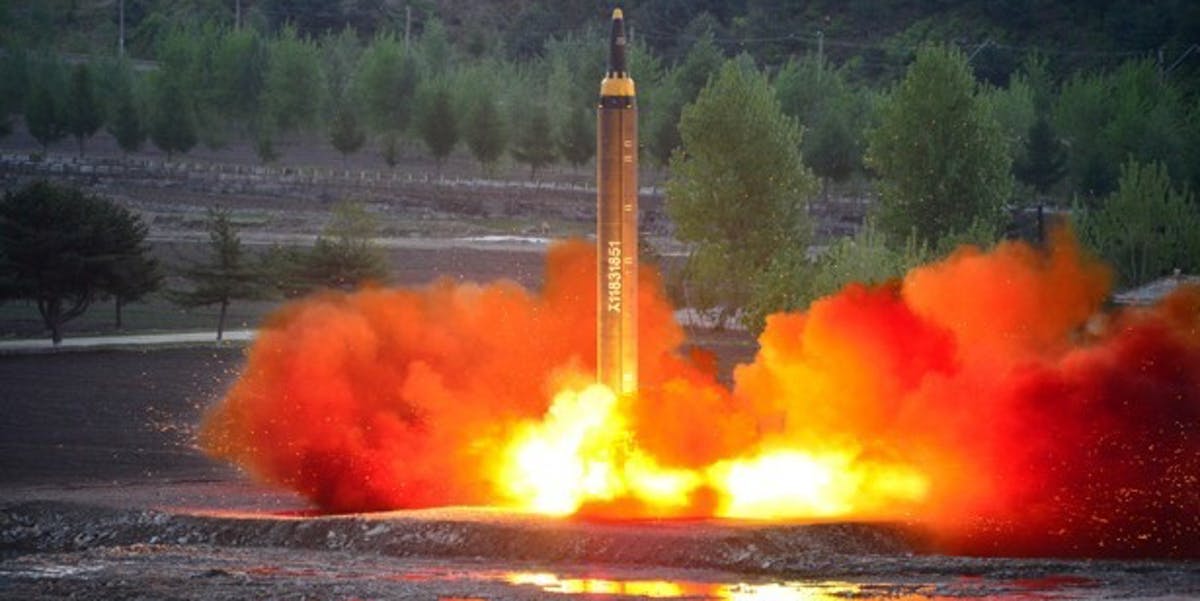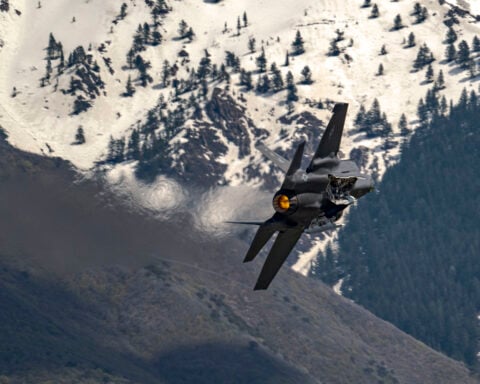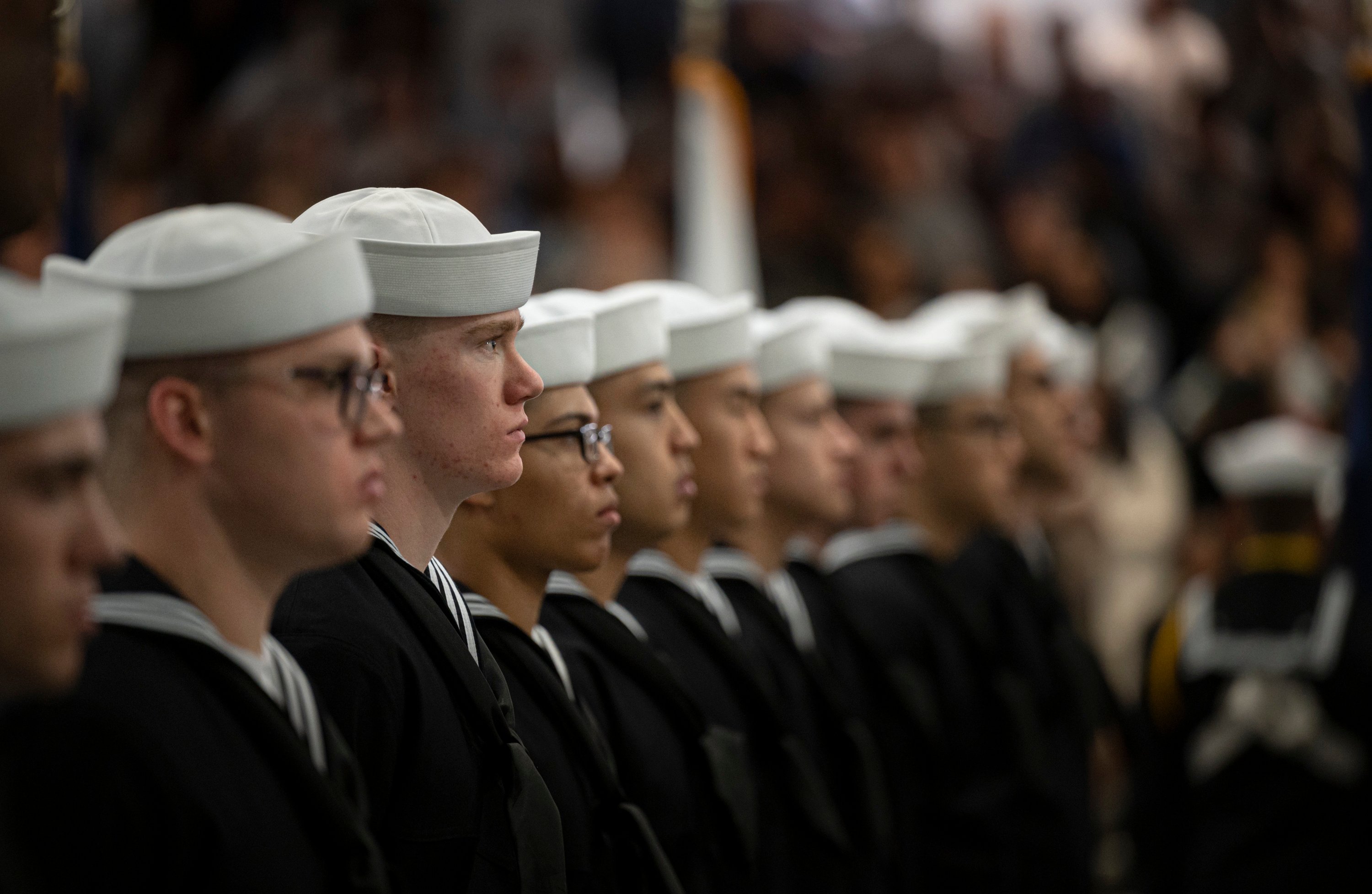
A Sunday North Korean missile test shows Pyongyang may be further along in developing a missile capable of hitting U.S. territory with a nuclear weapon than previously thought.
The launch of the Hwasong-12, “represents a level of performance never before seen from a North Korean missile,” wrote John Schilling for the blog 38 North.
“The missile would have flown a distant of some [2,800 miles] if launched on a maximum trajectory,” he wrote.
“It appears to have not only demonstrated an intermediate-range ballistic missile (IRBM) that might enable them to reliably strike the U.S. Air Force’s Anderson Airbase in Guam, but more importantly, may represent a substantial advance to developing an intercontinental ballistic missile (ICBM).”
Initial reports from U.S. Pacific Command assessed the Hwasong launch did not have the characteristics of an international continental ballistic missile.
“The type of missile is being assessed and the flight was not consistent with an intercontinental ballistic missile. U.S. Pacific Command is fully committed to working closely with our Republic of Korea and Japanese allies to maintain security,” read the statement
“The North American Aerospace Defense Command (NORAD) determined the missile launch from North Korea did not pose a threat to North America.”
A Monday report in Jane’s Defence Weekly said the 30-minute flight flew as high as 1,300 miles covering a distance of about 500 miles before landing in the ocean.
“The test-fire was conducted at the highest angle in consideration of the security of neighboring countries,” read a translation of a Monday the North Korean Central News Agency release.
“The test-fire aimed at verifying the tactical and technological specifications of the newly-developed ballistic rocket capable of carrying a large-size heavy nuclear warhead.”
While the test was successful, it doesn’t mean the North Koreans now have an operational ICBM capable of striking U.S. territory, Schilling wrote.
“This is not that missile but it might be a test bed, demonstrating technologies and systems to be used in future ICBMs like the KN-08 and KN-14. A full three-stage KN-08 would be very unlikely to work the first time it was tested, and the failure would be both expensive and very provocative.”
Following the launch, North Korea’s ambassador to China declared Pyongyang would conduct missile tests whenever it likes despite pressure from its neighbors, Russia and the West to limit its tests.
“We will conduct ICBM tests anytime and anywhere in accordance with the decisions made by our central leadership,” North Korea’s ambassador to China Ji Jae Ryong.
Russian President Vladimir Putin expressed concern that the North Korea would join the so-called “nuclear club” of
“We are against it and consider it counterproductive, damaging, dangerous,” he said. Putin also said the West shouldn’t attempt to “intimidate” North Korea through military action.
For its part, the U.S. issued a strong condemnation of the launch.
“North Korea has been a flagrant menace for far too long. South Korea and Japan have been watching this situation closely with us. The United States maintains our ironclad commitment to stand with our allies in the face of the serious threat posed by North Korea,” read a statement from the White House.
“Let this latest provocation serve as a call for all nations to implement far stronger sanctions against North Korea.”





